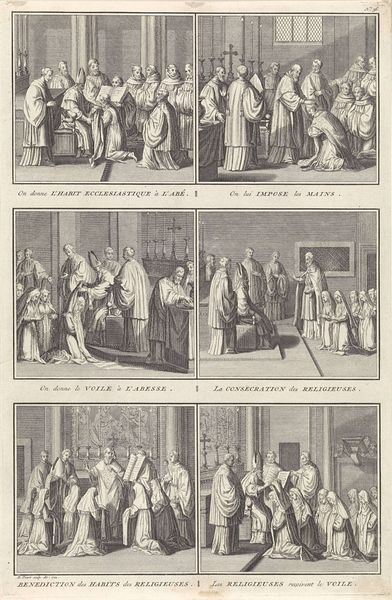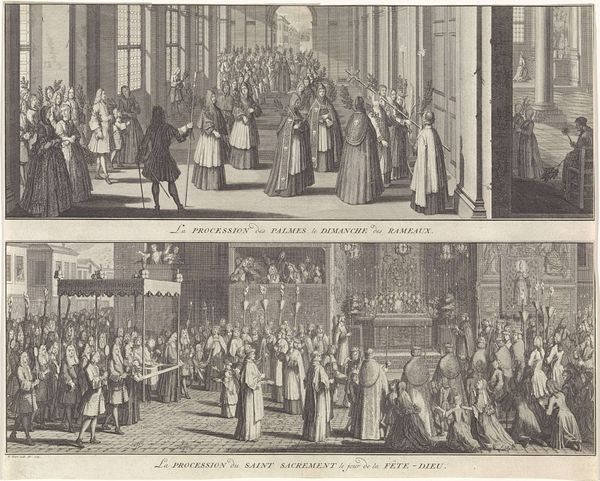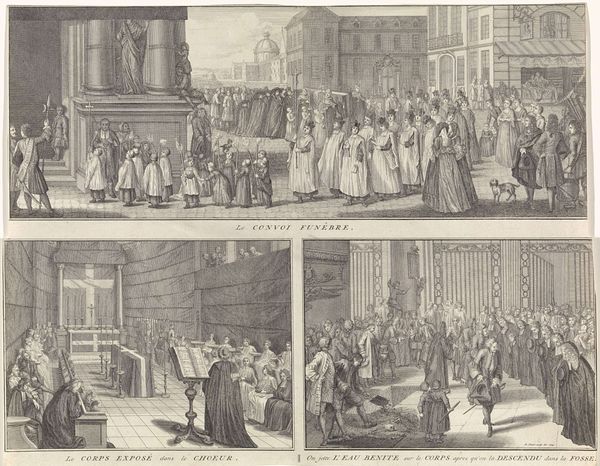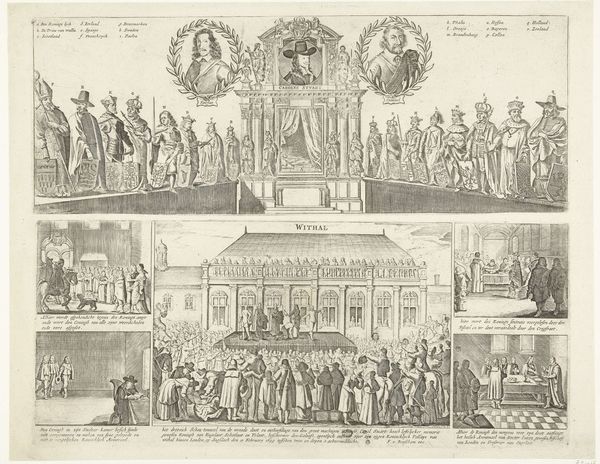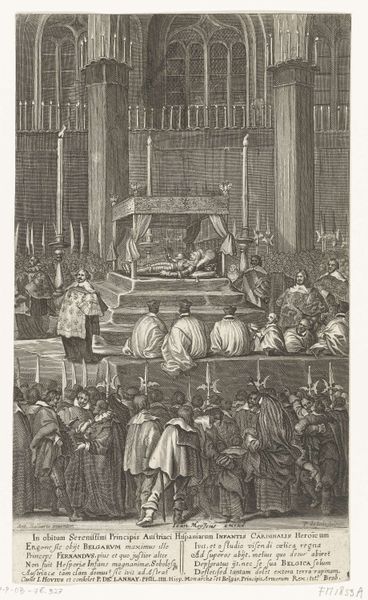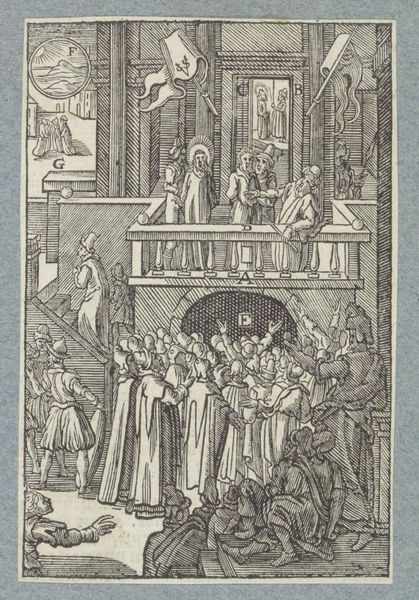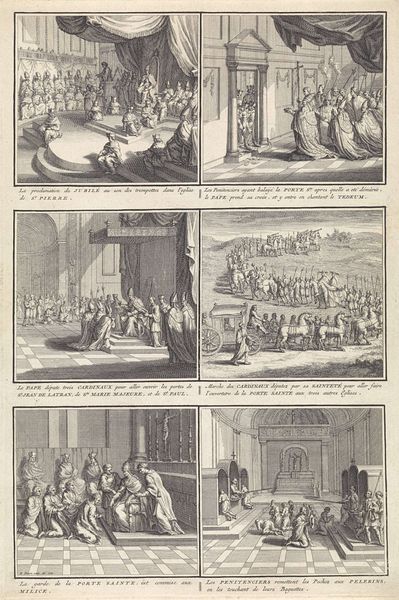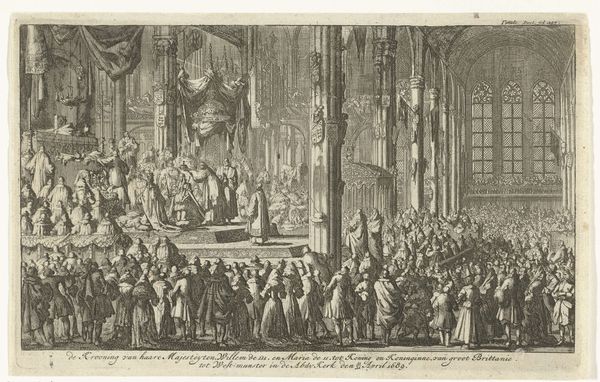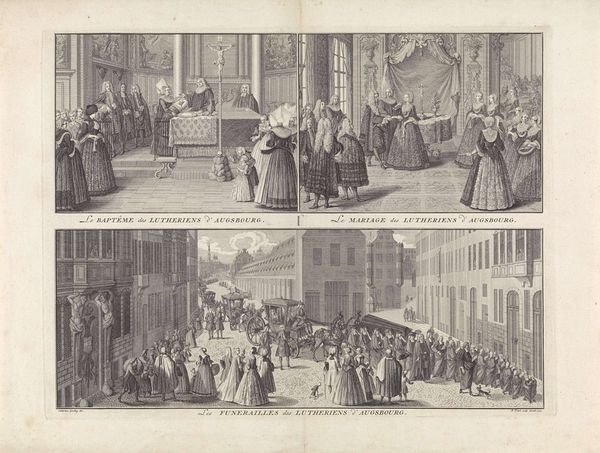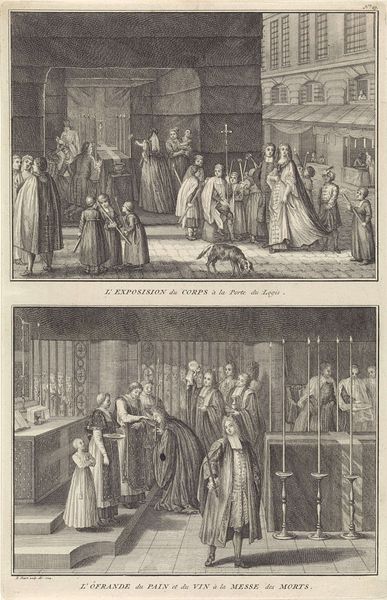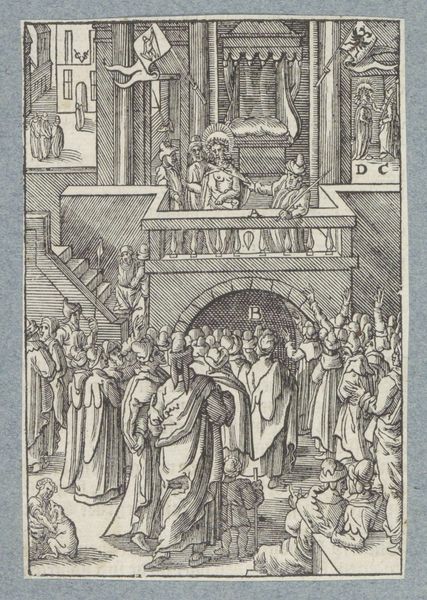
Installatie van nieuwe predikanten, catechisatie en biecht bij de lutheranen in Augsburg 1732
0:00
0:00
bernardpicart
Rijksmuseum
print, engraving
#
narrative-art
#
baroque
# print
#
line
#
genre-painting
#
history-painting
#
engraving
Dimensions: height 329 mm, width 216 mm
Copyright: Rijks Museum: Open Domain
Curator: This detailed engraving, created by Bernard Picart in 1732, is titled "Installatie van nieuwe predikanten, catechisatie en biecht bij de lutheranen in Augsburg." It offers a fascinating glimpse into Lutheran religious practices. Editor: My first impression is the stark linearity of the piece; the composition feels rigidly organized into discrete compartments. It reminds me of a meticulously crafted textile sample, albeit rendered through engraving rather than weaving or embroidery. Curator: The linear style really serves to present each vignette clearly. Each panel portrays a different aspect of Lutheran ministry—installation of ministers, catechesis, confession, and absolution—reflecting the social and institutional structures of religious life in Augsburg. It's almost a journalistic approach, recording these events for public understanding. Editor: And what tools would have been used in its creation? It is amazing how much details this small engraving depicts! Can you elaborate on Picart’s engagement with materials and production here? It speaks to the level of skill required for engraving—each line carefully etched. The prints produced from it would circulate, acting as a vital visual record for the wider populace, reinforcing the practices of faith, while serving commercial function as well, sold for a small profit. Curator: Precisely. Prints like this one circulated widely, informing public perception. Picart, and indeed printmaking in general, played a significant role in disseminating information and shaping public discourse during this era, solidifying institutions and traditions, like the Lutheran Church of Augsburg, within the broader cultural landscape. Editor: I also wonder about the social implications of each scene. For example, the confession booth almost resembles a confessional stall; considering that Lutherans broke from the Catholic Church a century prior, I imagine how this return to Catholic conventions may affect how one thinks of labor, materials and consumption that the parishioners put toward creating, visiting and utilizing this confessional stall. Curator: That's an insightful point about the confession. Indeed, this representation provides a tangible insight into how confessional spaces might also create new traditions in practice or reception of ministry! Editor: Looking closer, this detailed "textile," as I call it, reveals the labor and social context woven into its creation; it certainly reshapes my understanding of faith and practice in 18th-century Augsburg. Curator: For me, it underscores the role of art in constructing and conveying social narratives within a specific historical and religious context.
Comments
No comments
Be the first to comment and join the conversation on the ultimate creative platform.

